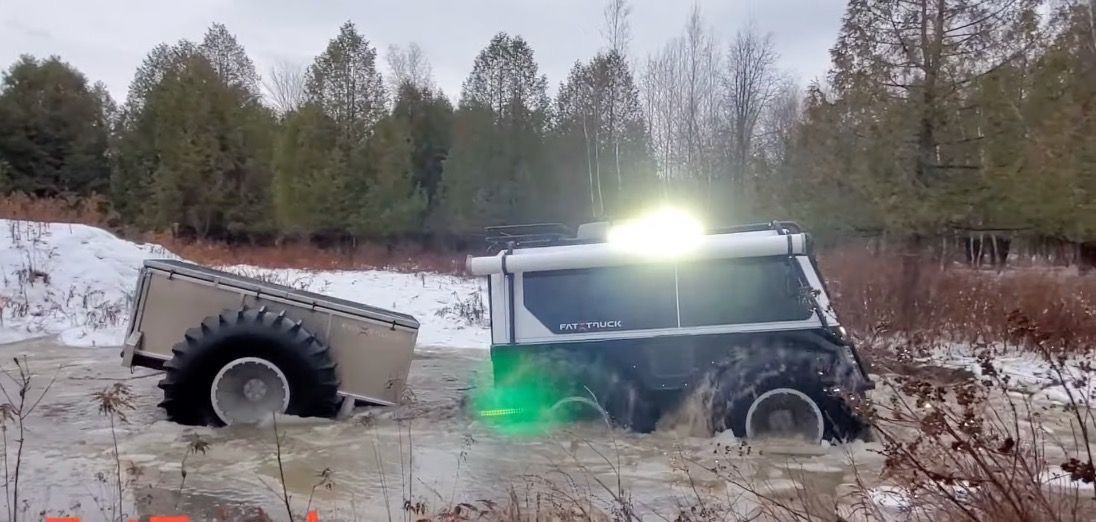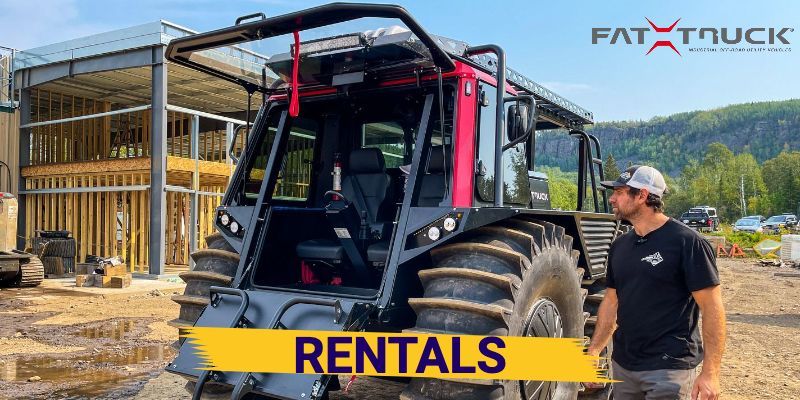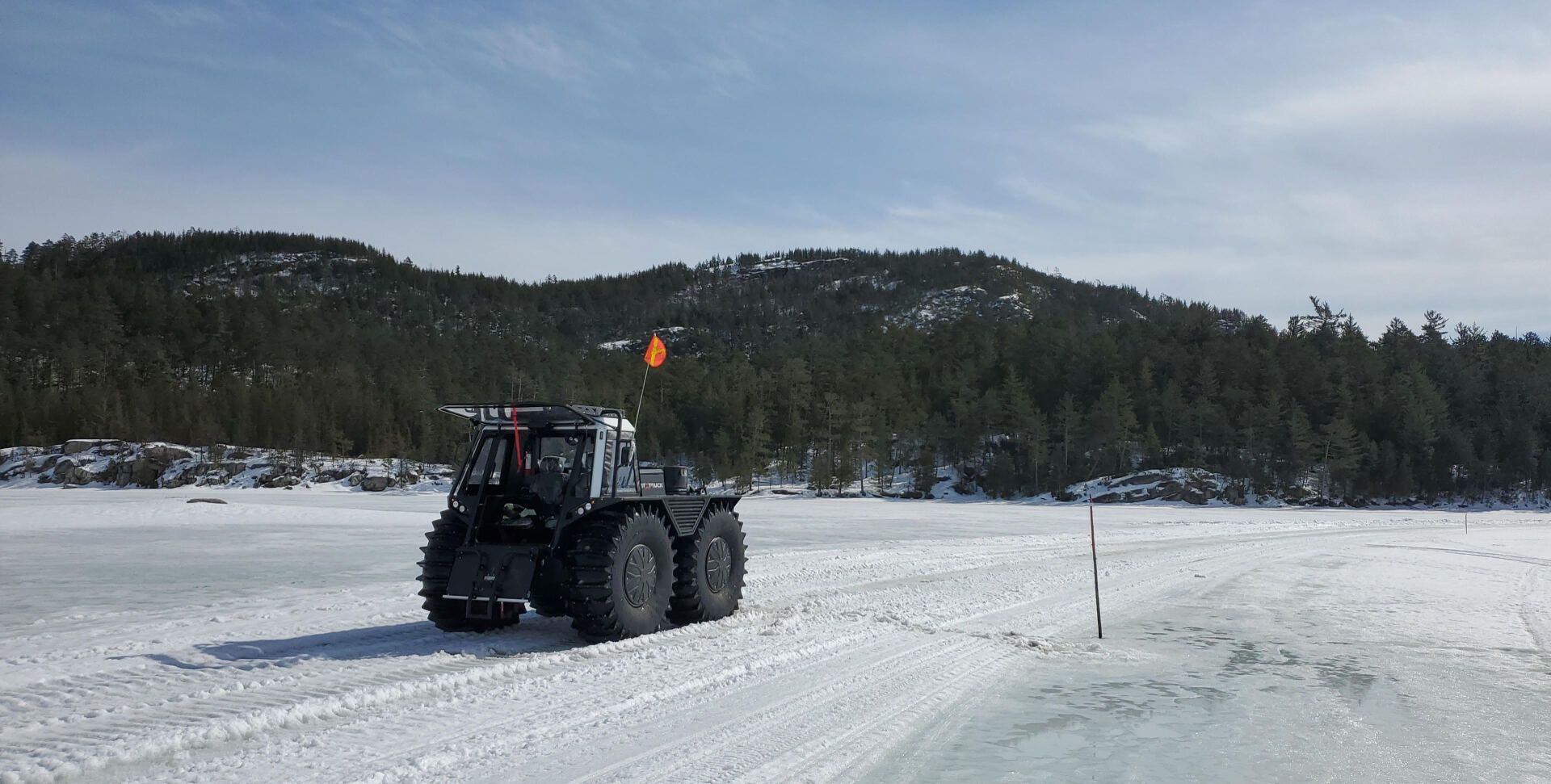Fat Truck® Safety Features
Fat Truck® Safety Features
Overview of a Fat Truck®
Fat Truck® is a leading industrial off-road vehicle. From construction sites to remote job locations, Fat Truck® has been designed to deliver rugged, dependable, and durable vehicles to meet the needs of industries such as mining, forestry, construction, oil and gas, and more.
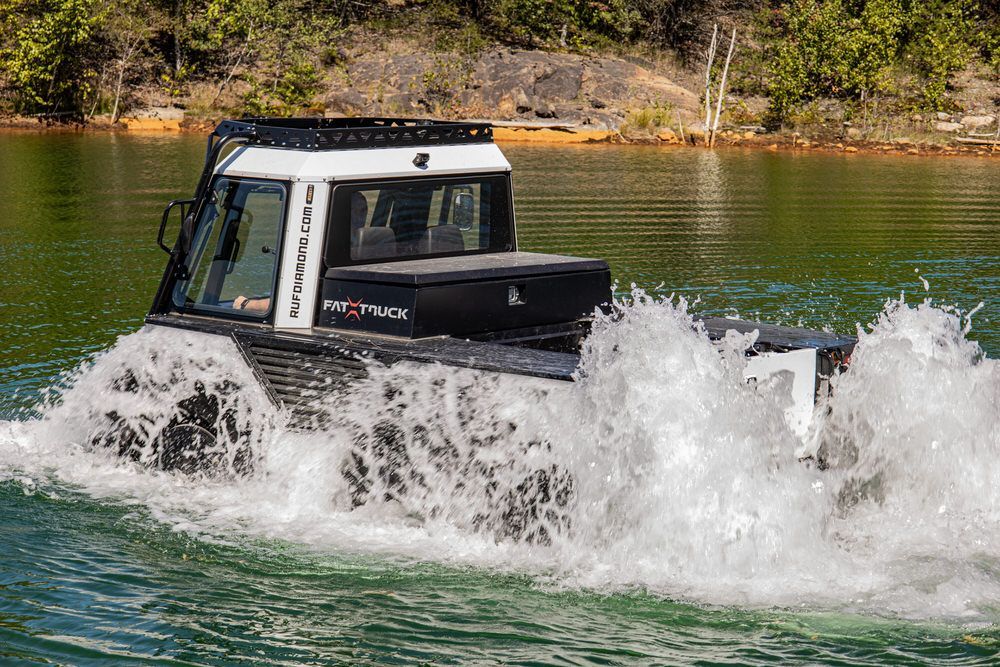
Industrial vehicles and the importance of safety features
Safety features in industrial vehicles are essential to companies because they help protect workers from potential hazards, improve the safety of operations, and reduce the risk of accidents.
With many jobs involving hazardous working conditions, having a vehicle designed with safety as a priority can help prevent serious injuries or even death.
Safety features help minimize risks associated with working on industrial sites. These features can also make operations more efficient by reducing downtime due to collisions or other issues.
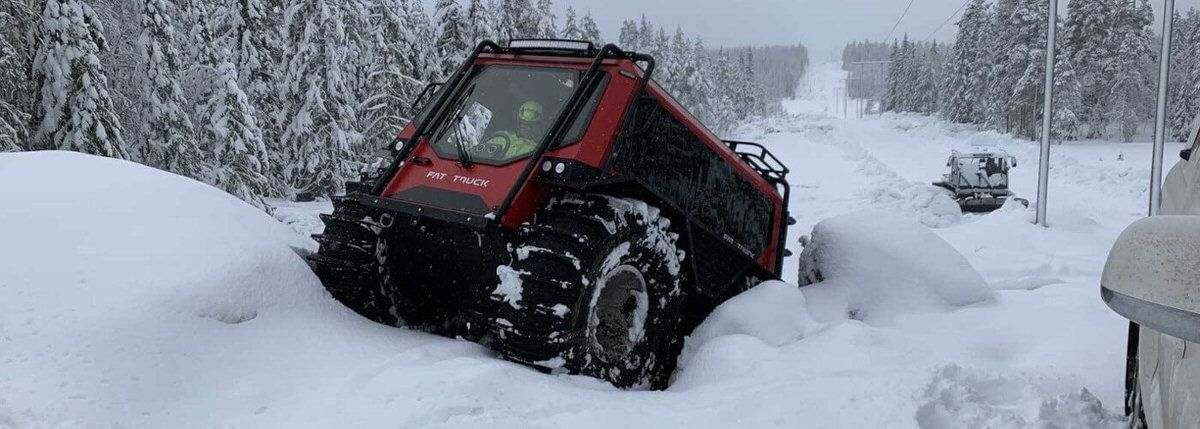
Fat Truck Operator Safety Training Courses
Before discussing the Fat Truck’s safety features, it’s also valuable to know about the safety and training courses for operators. By taking these courses, operators can be confident that they have the knowledge and skills necessary to operate their Fat Truck safely and efficiently.
Key safety features of Fat Truck® vehicles:
This list shows the key safety features of the Fat Truck® and the rest of this article explains why each feature is important.
- ROPS certified
- Controlled noise level
- EPA compliant
- Designed as per OSHA, ASME, ANSI, ISO, SAE
- Maximum speed limiter
- Automatic brakes when the vehicle is not moving
- Visibility 360°
- Side mirrors
- LED lights
- Automatic tire inflation system
- Front and rear ladder with 3 points contact all the time
- Grab handles at all entry points
- 3 points safety belt at all seats
- Flat tire safety kit
- Stretcher fit
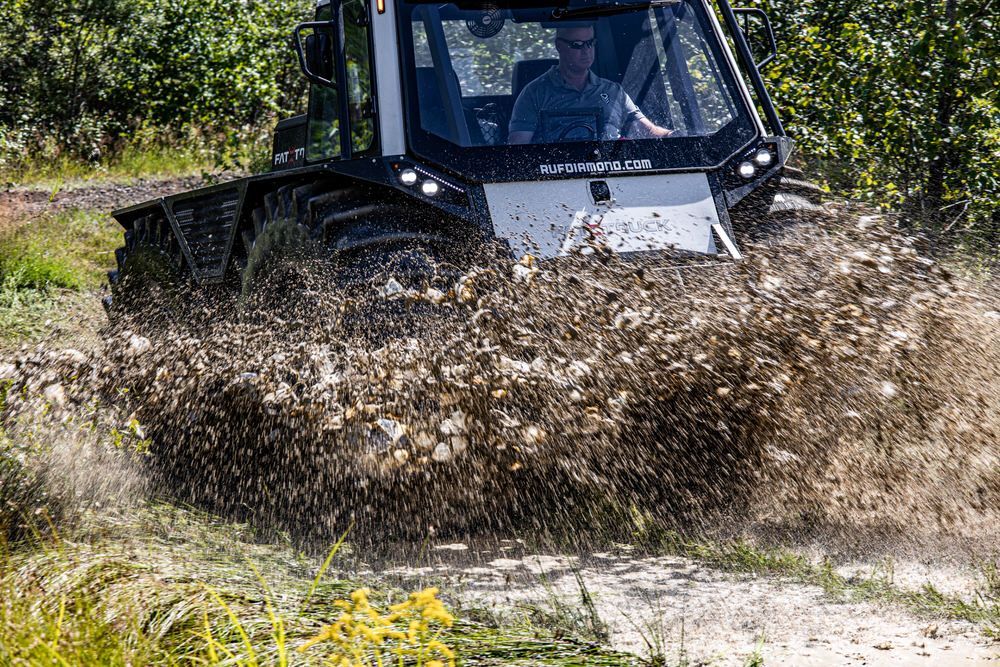
ROPS certified
What does it mean to be ROPS certified?
ROPS stands for Roll-Over Protective Structure. This certification ensures that the vehicle will be equipped with a protective structure in the event of an overturning incident, ensuring the safety of the driver and passengers.
This structure is designed to absorb impact energy and protect those inside from injury or death in the case of an accident. Fat Trucks are ROPS certified.
Is ROPS certification an international standard?
Yes, ROPS certification is an international standard. The ISO (International Organization for Standardization) develops and maintains the standards. The standard ensures that all such structures are designed, tested, and certified to meet specific safety requirements.
Safety belts
Fat Truck® vehicles are also equipped with safety belts, which can provide added security in rough terrain or moving heavy loads. Safety belts help keep drivers secure during the vehicle's operation, reducing the risk of injury from sudden movements or other unexpected events.
Controlled Noise Level
Why is a controlled noise level necessary in an industrial vehicle?
A controlled noise level is an important safety feature in industrial vehicles because excessive noise can cause hearing damage and impair the ability of workers to hear warnings or commands.
Excessive noise can also create dangerous distractions, leading to accidents and injuries. Noise levels should be kept at a safe level, either through sound-proofing materials or by limiting engine speeds and adjusting idle speeds.
EPA-compliant
What is an EPA-compliant vehicle, and why is it important?
EPA-compliant vehicles meet the standards set by the Environmental Protection Agency (EPA). These standards are essential because they help protect the environment and people's health by limiting emissions of pollutants and other harmful substances.
EPA-compliant vehicles use advanced technologies to reduce emissions, making them cleaner and more fuel-efficient than non-compliant vehicles. Using an EPA-compliant vehicle can help reduce air pollution, conserve natural resources, and save money on fuel costs in the long run.
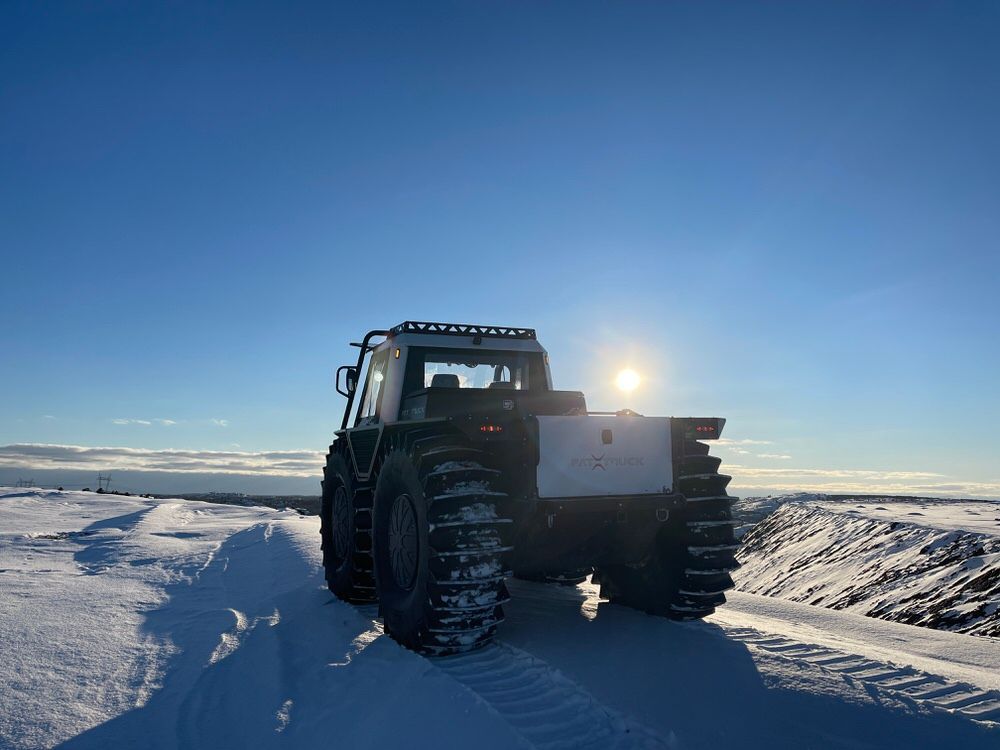
Designed as per OSHA, ASME, ANSI, ISO, SAE
What does it mean for a vehicle to be designed as per OSHA, ASME, ANSI, ISO, SAE?
OSHA (Occupational Safety and Health Administration), ASME (American Society of Mechanical Engineers), ANSI (American National Standards Institute), ISO (International Organization for Standardization) and SAE (Society of Automotive Engineers) are all standards organizations that develop safety and performance standards for industrial vehicles.
When a vehicle is designed per OSHA, ASME, ANSI, ISO, or SAE standards, the vehicle has been built to meet the highest safety requirements established by these organizations.
This ensures the vehicle is safe to operate in hazardous working environments and can withstand the toughest terrain. Additionally, these standards also ensure that the vehicle is efficient and reliable so that it can perform its intended function effectively.
Maximum speed limiter
What is a maximum speed limiter, and why is it important?
A maximum speed limiter is a device that can be installed in industrial off-road vehicles to limit the maximum speed they can travel. This helps ensure the safety of the driver, passengers, and other road users. It also reduces fuel consumption, increases efficiency, and prevents accidents caused by excessive speeding. Additionally, a maximum speed limiter can help keep emissions levels low, helping to reduce air pollution.
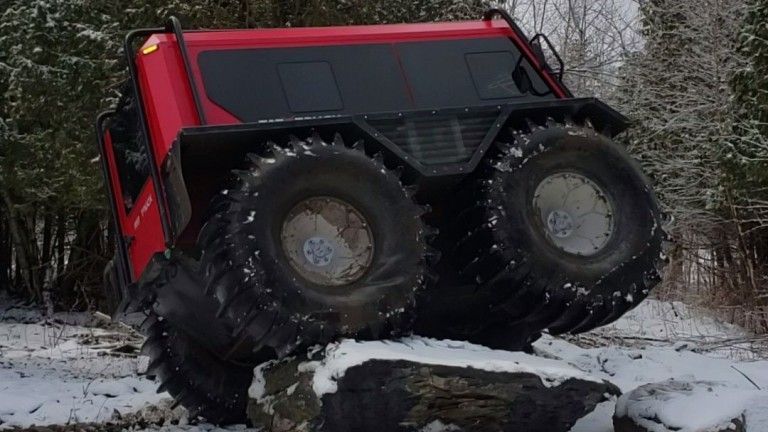
Automatic brakes when the vehicle is not moving
What are automatic brakes, and why are they important?
Automatic brakes are a brake system that automatically applies the brakes when the vehicle reaches a certain speed. This is important for safety because it prevents the driver from going too fast in certain conditions, which can result in an accident.
Automatic brakes also help to improve fuel efficiency and reduce emissions by preventing unnecessary acceleration.
Additionally, automatic brakes can help to improve handling and stability on uneven terrain, which is especially important for industrial off-road vehicles.
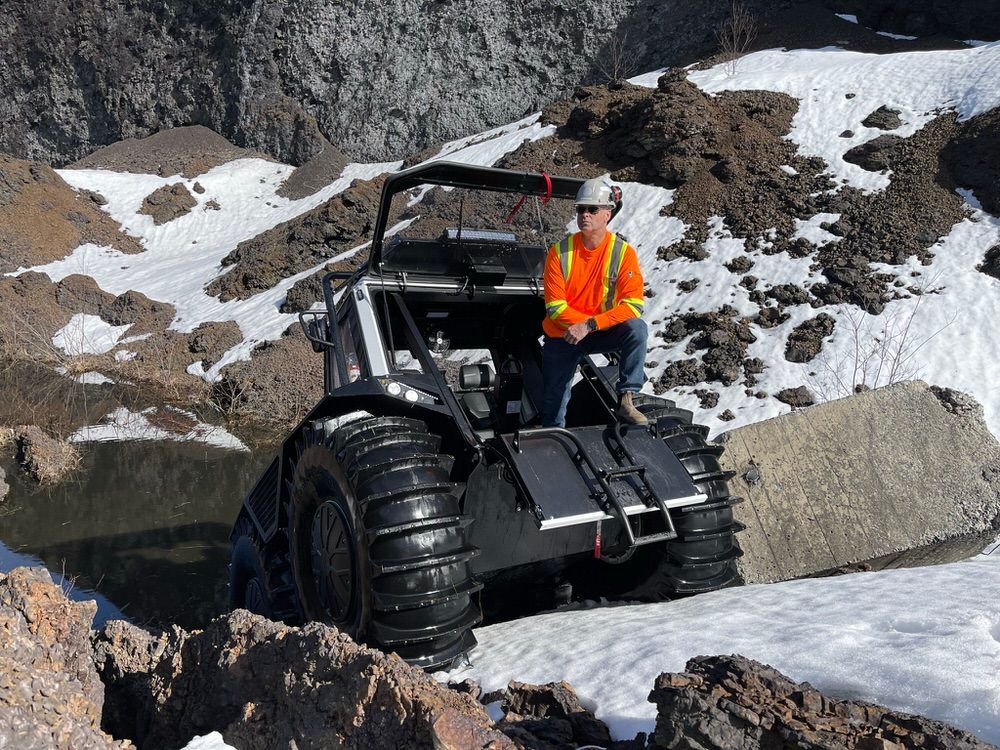
360° visibility
What does it mean to have 360° visibility in an industrial vehicle, and why is it important?
Having 360° visibility in an industrial vehicle means the driver has a complete view of their environment in all directions. This is important for safety because it allows the driver to easily spot potential hazards or obstacles, such as other vehicles, pedestrians, or animals.
Additionally, having 360° visibility can help drivers avoid collisions and reduce the risk of accidents. A clear view of the terrain ahead can also improve overall driving performance by increasing reaction times and allowing drivers to anticipate potential hazards more quickly.
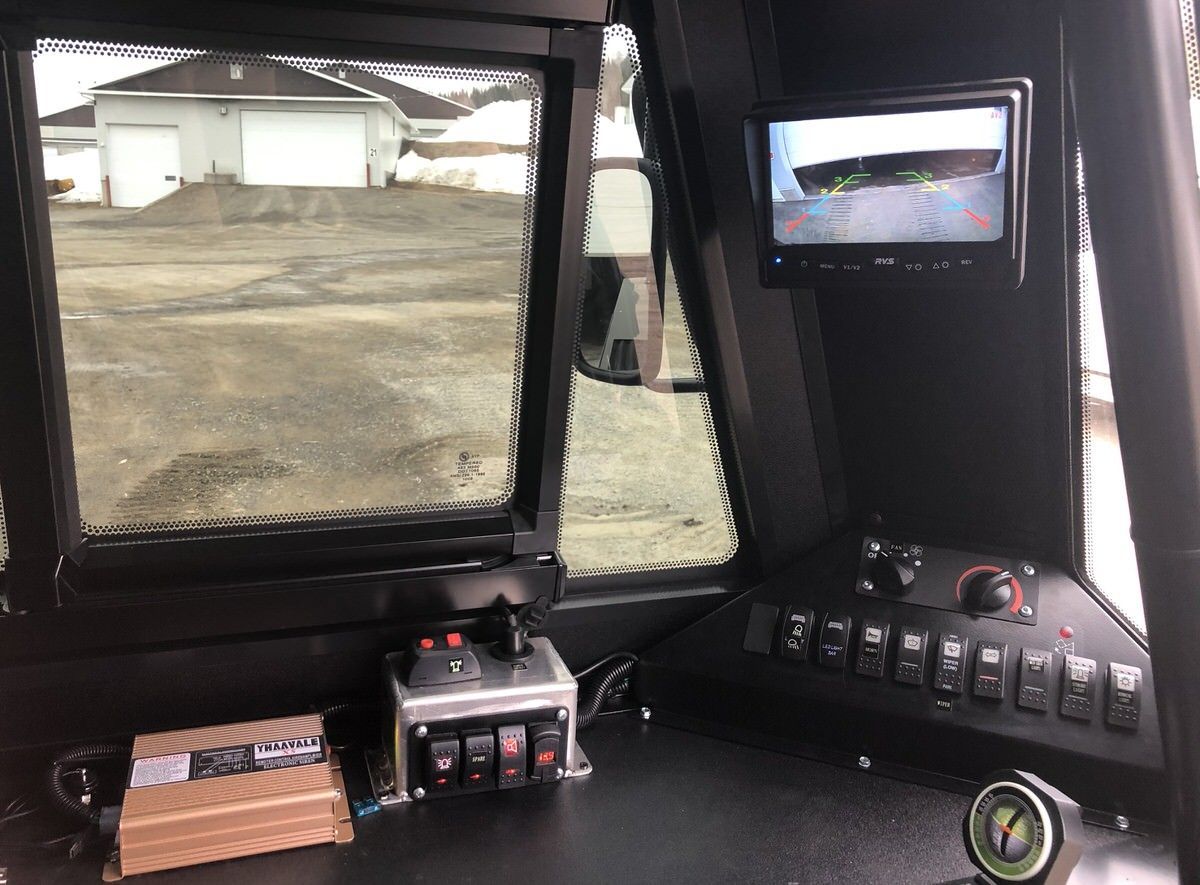
LED Lights
Why are LED lights important for safety in industrial vehicles?
LED lights are important for safety in industrial vehicles because they provide a bright and clear light that is easy to see, even in low-light conditions. This is especially useful when driving on dark roads or in hazardous working environments.
LED lights also consume less energy than traditional lighting, so they can help reduce fuel costs and emissions levels. Additionally, LED lights have a longer lifespan than other types of lighting, making them more cost-effective in the long run.
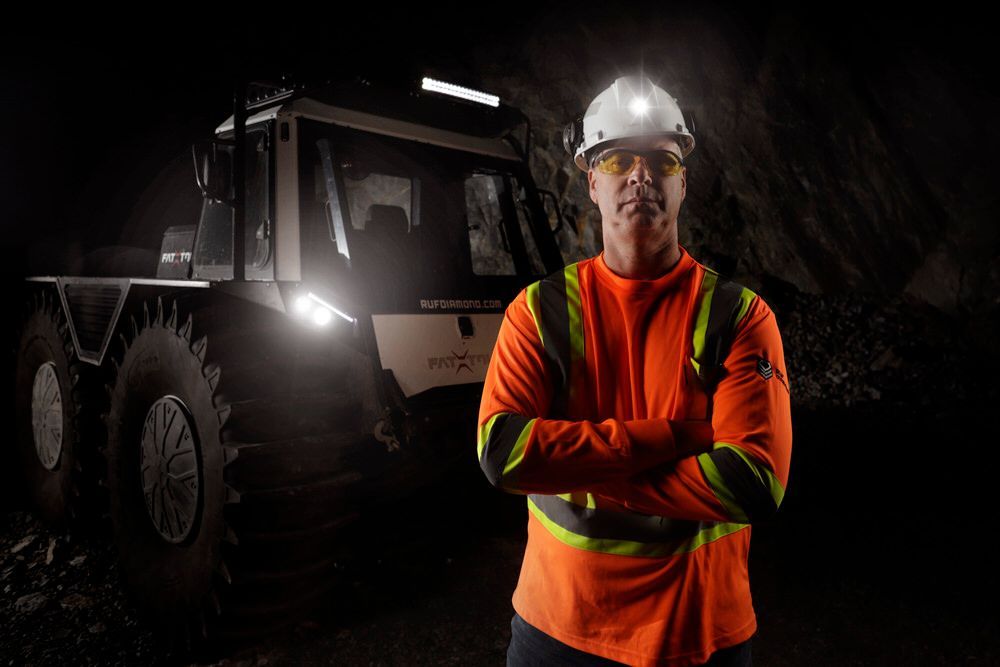
Side Mirrors
How do side mirrors help drivers of industrial vehicles?
Side mirrors are essential for drivers of industrial vehicles because they provide a more expansive view of the surrounding area. This helps improve visibility and allows drivers to see potential obstacles or hazards outside their direct line of sight.
Additionally, side mirrors can help drivers spot other vehicles on the road, giving them more time to react and make necessary maneuvers. Side mirrors can also help reduce fatigue while driving, allowing drivers to keep their eyes on the road ahead instead of constantly turning their heads to check their blind spots.
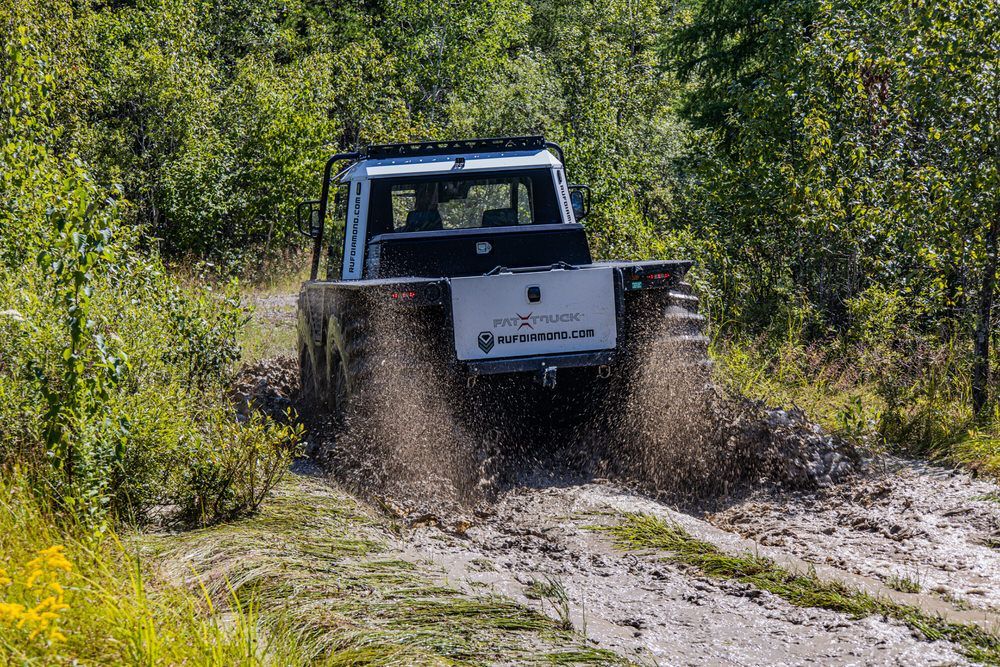
Automatic tire inflation system
Why is an automatic tire inflation system and why is it important?
An automatic tire inflation system is important for industrial vehicles because it ensures that the tires remain at optimal pressure while driving. This helps to prevent excessive wear, which can lead to tire failure. Also, proper tire pressure can help improve fuel efficiency and reduce emissions by reducing rolling resistance.
It can also help improve the vehicle's handling on rough terrain and increase safety by preventing blowouts and flat tires. An automatic tire inflation system also helps extend the tires' life, saving money in the long run on replacements or repairs.
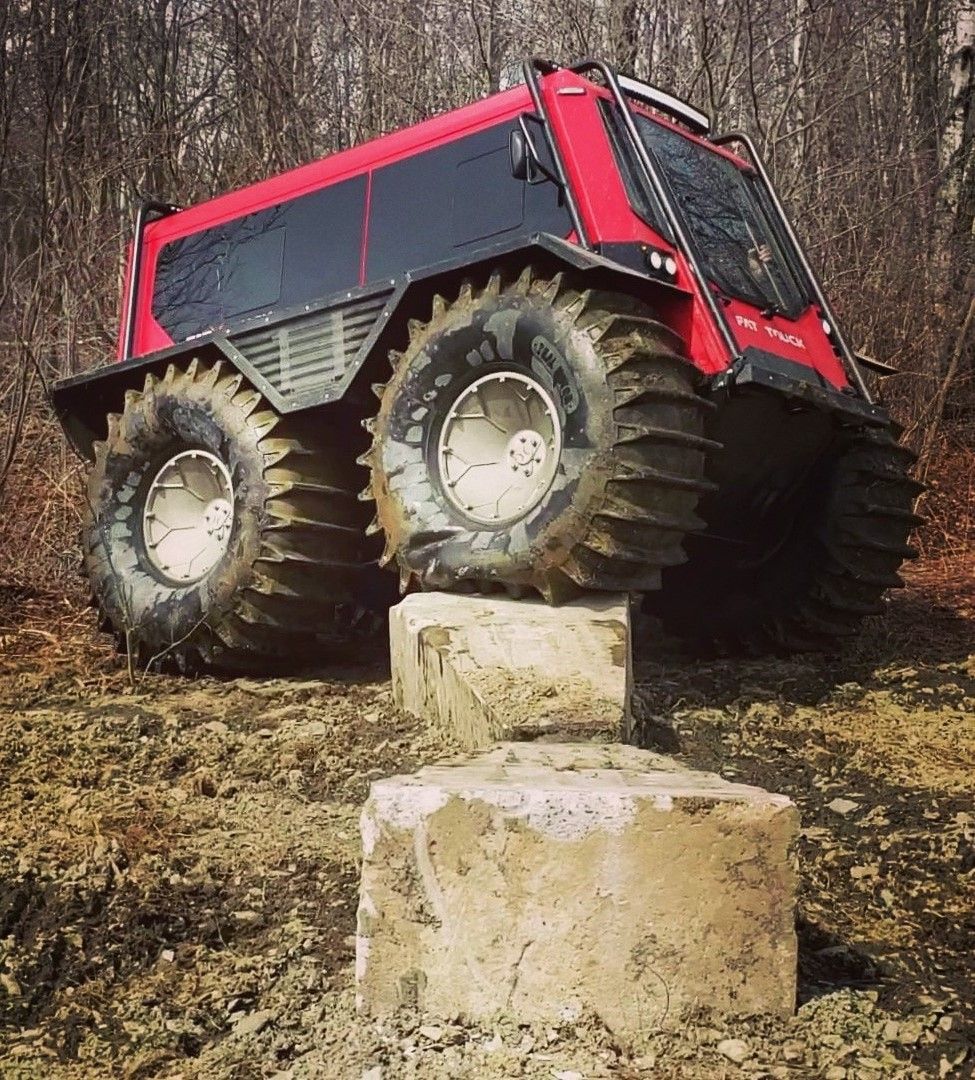
Front and rear ladder with 3 points contact all the time.
What does it mean to have 3 points of contact on a ladder?
Having three points of contact on a ladder means that the user should always have at least three body parts in contact with the ladder. This includes two feet and one hand or two hands and one foot. Maintaining this posture while using a ladder is important because it helps improve stability and balance while climbing, which can reduce the risk of falls.
Additionally, having three points of contact reduces the risk of overextending your reach or leaning too far away from the ladder, which can increase the chance of slipping or losing balance.
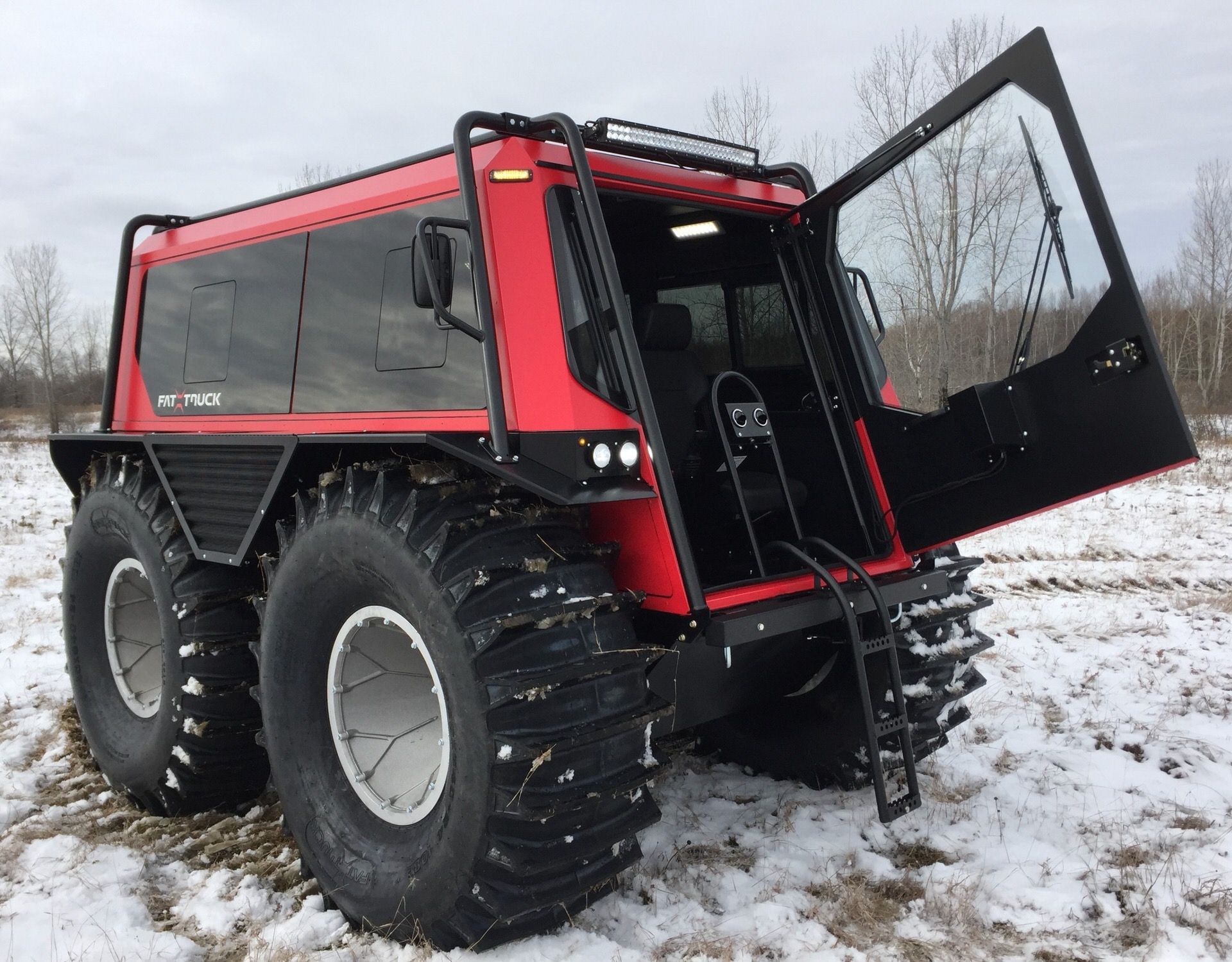
Grab handles at all entry points.
How do grab handles on industrial vehicles improve the safety of passengers?
Grab handles on industrial vehicles provide passengers with a secure grip inside the vehicle. This helps to reduce the risk of slipping or being thrown around in case of sudden stops or turns. Additionally, grab handles provide stability and support for passengers when entering or exiting the vehicle, which can help to reduce the chance of injuries.
Grab handles also make it easier for passengers to move around in the vehicle and reach higher surfaces, such as shelves or overhead compartments.
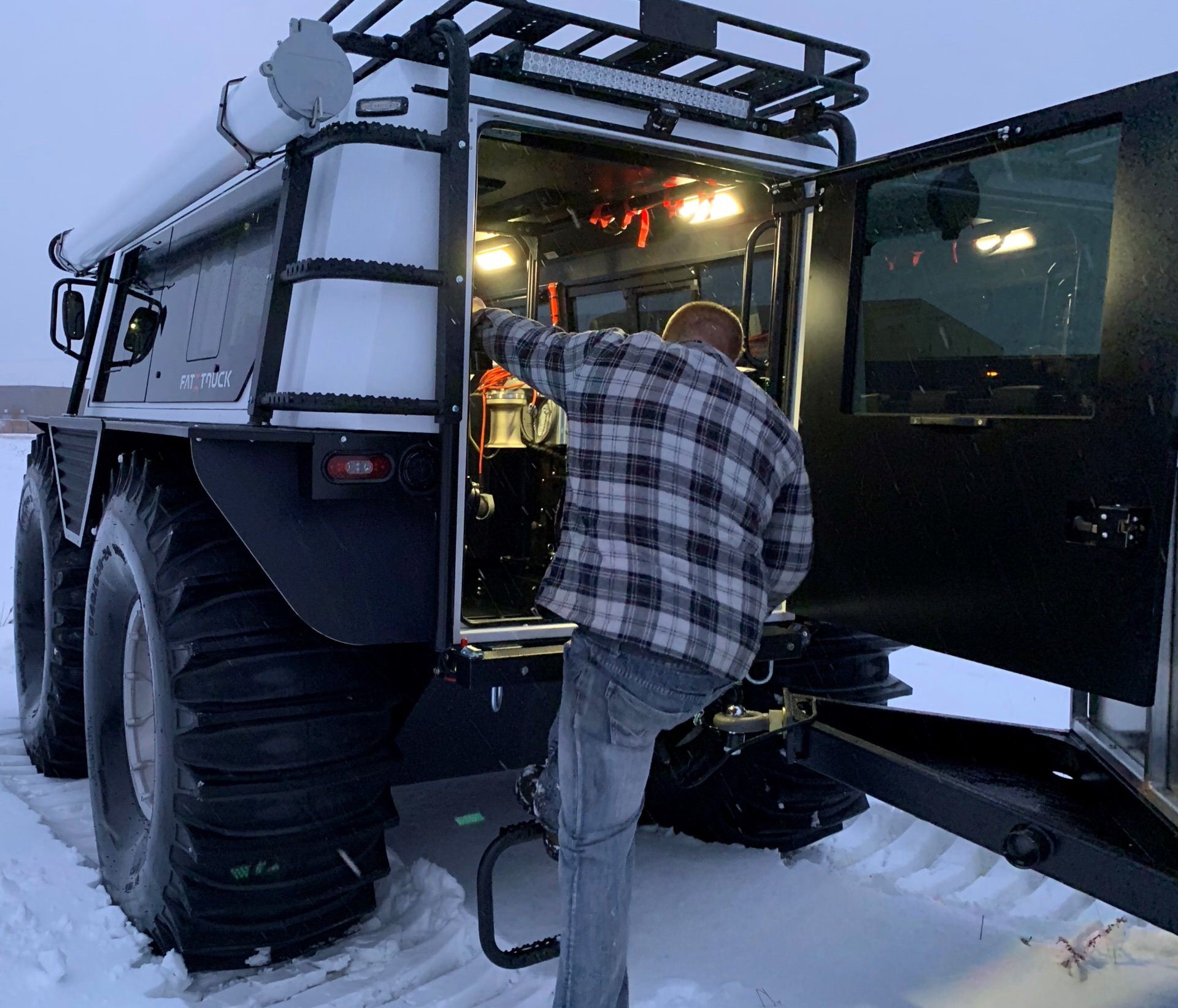
Three-point safety belt at all seats
Why is a 3-point safety belt so crucial in an industrial vehicle like Fat Truck®?
A 3-point safety belt is a type of seatbelt that consists of two shoulder straps and one lap belt. The shoulder straps are designed to fit across the chest, while the lap belt fits across the hips. It is essential to wear a 3-point safety belt when driving because it helps to keep drivers and passengers securely in their seats in case of an accident or sudden stop.
Additionally, wearing a 3-point safety belt can help reduce the risk of serious injuries in an accident by keeping everyone firmly in their seats so they can better brace for impact.
What if you puncture a tire in your Fat Truck?
The onboard compressor system will keep your tire inflated to you can get yourself and your team out of the bush and back to safety for a repair.
Fat Truck is built to go anywhere — and keep you safe while doing it.
Our heavy duty mechanic, TJ, explains the onboard compressor.
Flat tire safety kit
What is a flat tire safety kit, and why is it important in an industrial vehicle?
A flat tire safety kit is a set of tools and accessories designed to help drivers change a flat tire safely. The kit usually includes a jack, tire iron, spare tire, and other essential tools for changing the tire. It is important for industrial vehicles because it ensures drivers have the necessary equipment in an emergency.
Additionally, having a flat tire safety kit can help save time and money by allowing drivers to change their tires rather than waiting for roadside assistance or incurring costly repair bills.
Stretcher fit
What does being fit for a stretcher with an industrial vehicle mean?
Being fit for a stretcher with an industrial vehicle means the vehicle has been modified to transport patients and medical personnel safely. This includes installing handrails, securing restraining equipment, and creating designated space for a stretcher to secure during transport safely.
Additionally, being fit for a stretcher may involve installing additional safety features, such as emergency brakes or flashing lights, to help ensure the safety of the patient and medical personnel.

Conclusion
The Fat Truck® industrial vehicles are designed with safety in mind for industries such as mining, forestry, construction, oil and gas, and more. They provide the safe, reliable and comfortable transport of people and equipment throughout all sorts of terrain and water conditions.
For those looking for top-quality industrial off-road vehicles that are reliable and safe, look no further than Fat Truck®. Offering a wide range of models with excellent customer service, you can rest assured that your needs will be met with a Fat Truck® vehicle.
PDF Brochures
If you are ready to inquire about a Fat Truck® in Northwestern Ontario or Manitoba, contact Loch Lomond Equipment Sales.
We sell and rent Fat Trucks®.
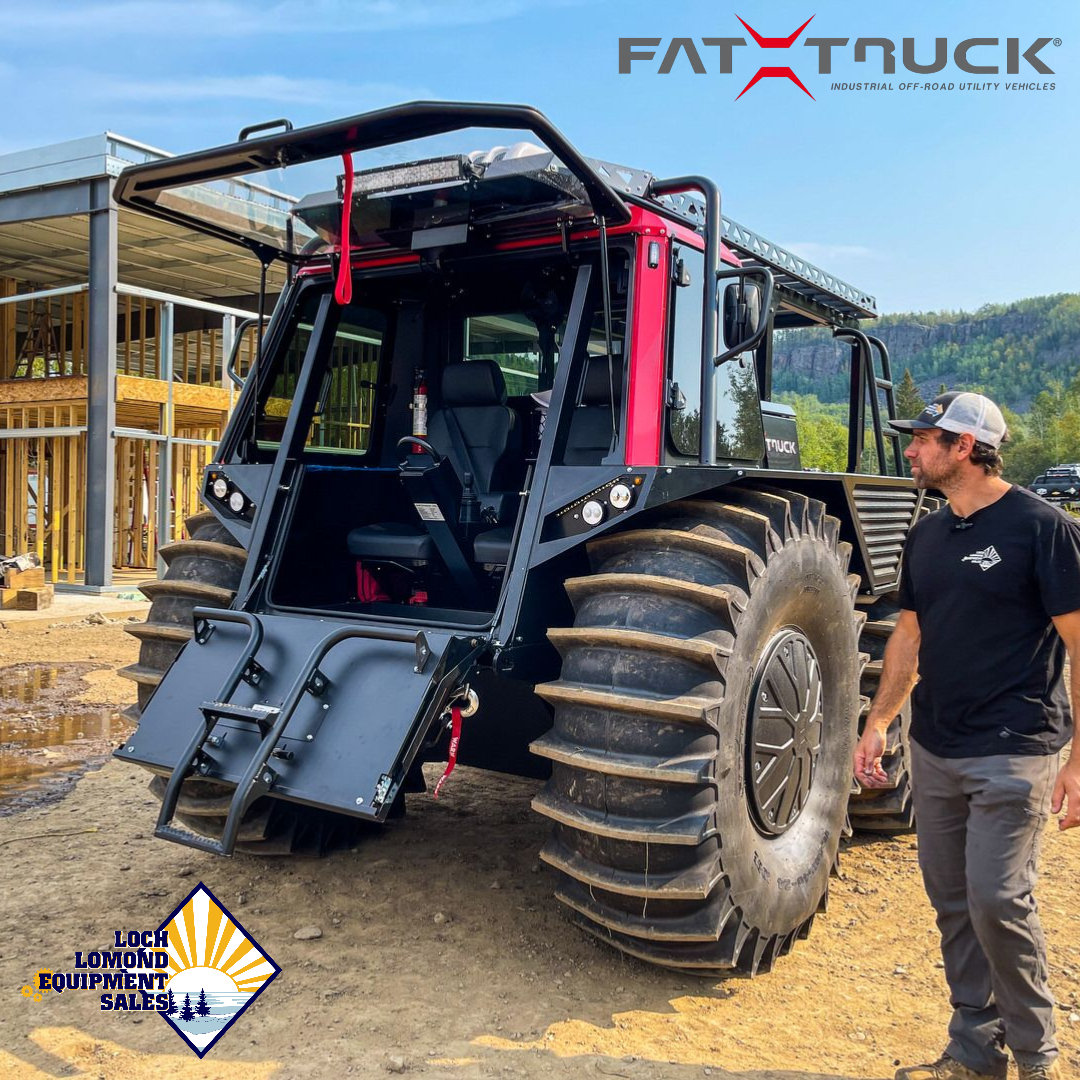
Do you have a question or comment?
Share this blog post.

